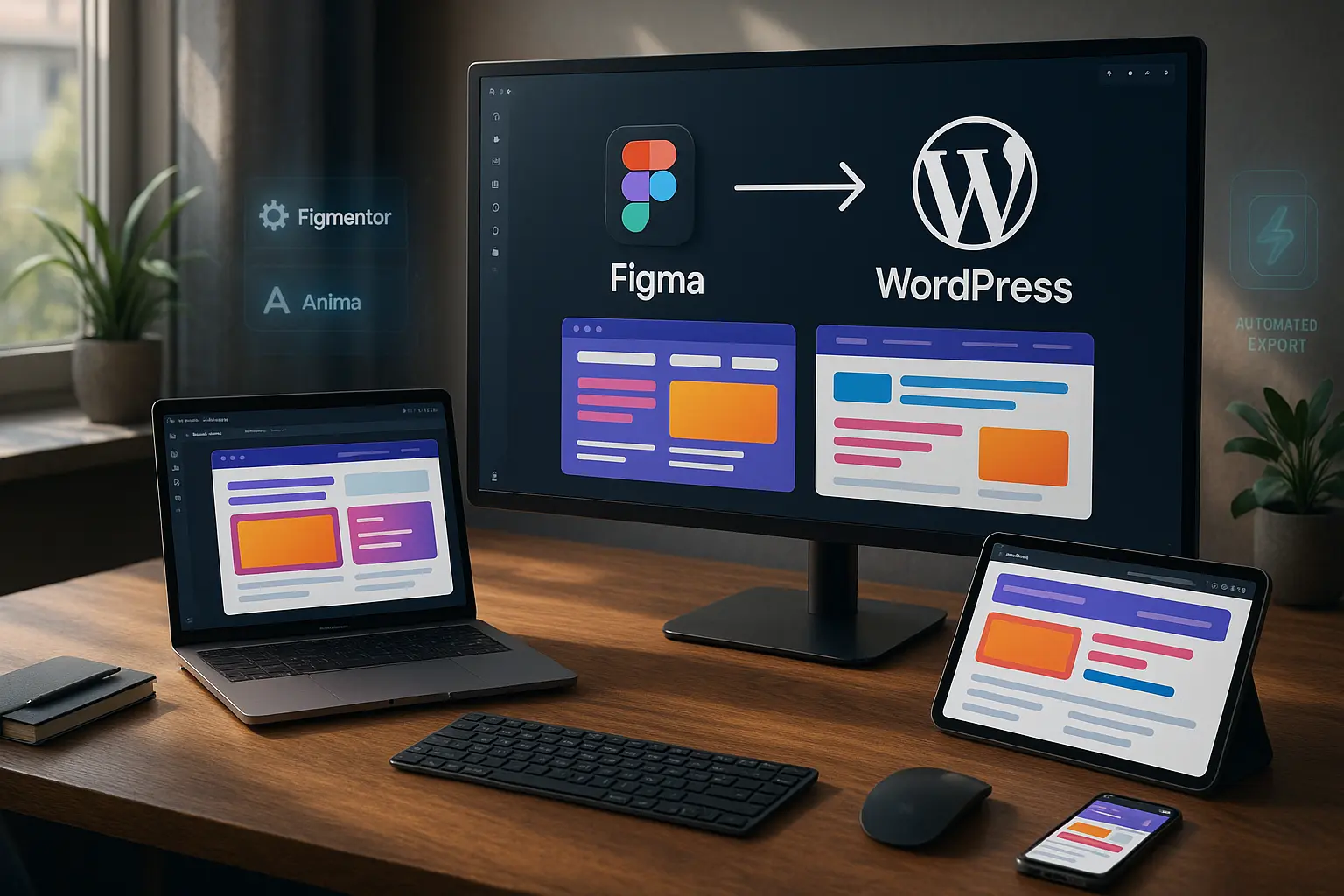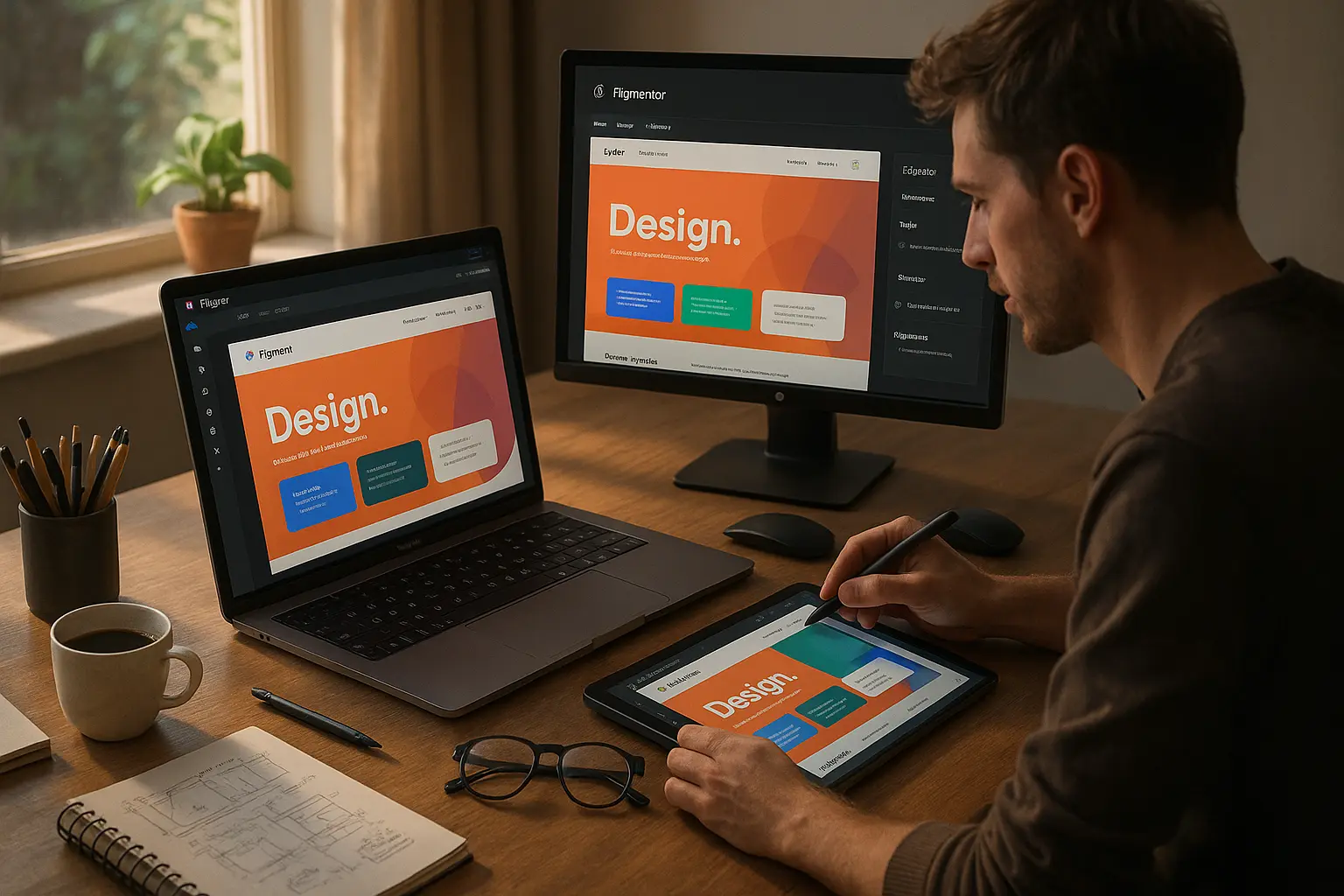1. Why Convert Figma to WordPress for Free? {#why-convert}
If you’re a freelancer, small agency, or student, you know the struggle:
- Clients want fast, pixel-perfect WordPress sites, but manual coding takes forever.
- Hiring developers is expensive (average cost: $3,000–$10,000 per project).
- No-code tools promise speed, but many require paid plans or technical know-how.
The solution? Convert Figma to WordPress for free, without writing a single line of code.
Who Benefits from Free Figma-to-WordPress Conversion?
✔ Freelancers – Deliver projects faster and take on more clients. ✔ Small Agencies – Scale without hiring extra developers. ✔ Students & Beginners – Learn WordPress design without coding barriers. ✔ Marketers & Startups – Launch landing pages and blogs quickly.
Key Stat: 68% of designers say manual handoffs to developers are their biggest bottleneck. Free no-code tools eliminate this friction.
2. The Challenges of Manual Figma-to-WordPress Conversion {#challenges}
Before diving into free tools, let’s address the pain points of traditional workflows:
| Challenge | Why It’s a Problem | Free No-Code Solution |
|---|---|---|
| Manual Coding | Takes 20+ hours per page, prone to errors | Automated conversion tools |
| Developer Dependence | High costs, delays, miscommunication | Direct Figma-to-WordPress export |
| Responsive Issues | Designs break on mobile/tablet | AI-powered responsive adjustments |
| Plugin Conflicts | WordPress plugins clash, slowing sites | Clean, optimized code output |
| Version Control | Figma updates ≠ WordPress updates | Real-time sync (some tools) |
Pro Tip: If you’re manually copying CSS from Figma to WordPress, you’re wasting 70% of your time on repetitive tasks. (Source: Webflow vs. WordPress Study, 2024)
3. Best Free Tools to Convert Figma to WordPress (No Code) {#best-tools}
Not all free tools are equal. Here’s a breakdown of the best options in 2025:
A. Figmentor (Free Plan Available)
Best for: Pixel-perfect WordPress pages, Elementor integration, AI automation.
✅ Pros:
- Free plan (limited exports, great for testing).
- Direct Figma-to-Elementor conversion (no intermediate steps).
- AI-powered responsive design (adjusts layouts automatically).
- Clean, lightweight code (no bloat like some page builders).
❌ Cons:
- Free plan has export limits (upgrade for unlimited).
- Requires Elementor (but most WordPress users already have it).
Try Figmentor’s Free Plan Here (CTA link)
B. Anima (Free Tier)
Best for: Simple landing pages, basic interactions.
✅ Pros:
- Free for 1 project.
- Exports to WordPress via HTML/CSS (requires manual upload).
❌ Cons:
- No direct WordPress integration (must manually paste code).
- Limited dynamic content support.
C. Locofy (Free for Basic Use)
Best for: React/Next.js exports (not ideal for WordPress).
✅ Pros:
- Free for small projects.
- Good for developers who need code snippets.
❌ Cons:
- Not WordPress-native (requires extra steps).
- Steeper learning curve.
D. Manual Workarounds (Not Recommended)
Some designers try:
- Copying CSS from Figma → Time-consuming, error-prone.
- Using WordPress block editor → Limited design flexibility.
- Hiring on Fiverr/Upwork → Expensive, inconsistent quality.
Verdict: Figmentor’s free plan is the only true no-code, direct Figma-to-WordPress solution that doesn’t require manual coding or workarounds.
4. Step-by-Step: Convert Figma to WordPress for Free with Figmentor {#step-by-step}
Ready to convert your Figma design to WordPress in minutes? Follow this no-code workflow:
Step 1: Prepare Your Figma File for WordPress
Before exporting, optimize your design: ✔ Use Auto Layout (Figma’s 2024 update makes this easier). ✔ Name layers clearly (e.g., “Hero-Section-Button” instead of “Rectangle 1”). ✔ Set up responsive constraints (Figmentor reads these for mobile adjustments). ✔ Avoid complex animations (free tools have limits; stick to hover effects).
Pro Tip: Use Figma’s “Frames” for WordPress sections (Header, Hero, Features, Footer). This helps Figmentor map designs accurately.
Step 2: Install Figmentor’s Free Plugin
- Go to Figmentor.io and sign up for the free plan.
- Install the WordPress plugin (Works with Elementor).
- Connect your Figma account (OAuth login, no API keys needed).
Why Elementor? It’s used by 12+ million WordPress sites and integrates seamlessly with Figmentor.
Step 3: Select & Export Your Figma Design
- Open your Figma file in Figmentor’s dashboard.
- Choose the frames/pages you want to export.
- Click “Export to WordPress” (free plan allows 1-2 exports/month).
- Preview the WordPress draft before publishing.
AI Magic: Figmentor automatically:
- Converts Figma text styles → WordPress typography.
- Adjusts spacing/padding for mobile.
- Maps buttons, forms, and images to Elementor widgets.
Step 4: Fine-Tune in WordPress (Optional)
- Edit in Elementor (drag-and-drop adjustments).
- Add dynamic content (ACF, WooCommerce, etc.).
- Optimize for SEO (Yoast RankMath compatibility).
Step 5: Publish & Test
- Check mobile responsiveness (Figmentor handles 80% of this).
- Test load speed (Figmentor’s code is optimized for Core Web Vitals).
- Go live!
Done! Your Figma design is now a fully functional WordPress page, no code, no developers, no hassle.
5. Pro Tips for a Smooth Figma-to-WordPress Workflow {#pro-tips}
✅ Design for WordPress from the Start
- Use standard web fonts (Google Fonts, system fonts).
- Stick to 12-column grids (WordPress themes love this).
- Avoid custom SVG animations (free tools struggle with these).
✅ Optimize Images Before Export
- Compress in Figma (use plugins like TinyImage).
- Export as WebP (smaller file size = faster WordPress site).
✅ Use Figmentor’s AI Features (Even on Free Plan)
- Auto-responsive adjustments (saves hours of manual tweaking).
- Smart widget mapping (Figma buttons → Elementor buttons automatically).
✅ Upgrade When Ready
The free plan is great for testing, but if you’re handling multiple clients, consider:
- Figmentor Pro ($29/mo) – Unlimited exports, priority support.
- Agency Plan ($99/mo) – Team collaboration, white-labeling.
Did You Know? Agencies using Figmentor reduce project time by 60% (Case Study).
6. Case Study: How a Freelancer Saved 10+ Hours per Project {#case-study}
Meet Sarah, a freelance web designer who hated developer handoffs:
“I’d spend 5 hours designing in Figma, then 15 hours explaining it to a developer. Miscommunications meant revisions, delays, and unhappy clients.”
Her Old Workflow (Before Figmentor)
- Design in Figma → 5 hours.
- Write specs for developer → 3 hours.
- Back-and-forth revisions → 10+ hours.
- Final QA & fixes → 5 hours. ⏳ Total: 23+ hours per project.
Her New Workflow (With Figmentor Free Plan)
- Design in Figma → 5 hours (same).
- Export directly to WordPress → 10 minutes.
- Minor tweaks in Elementor → 1 hour. ⏳ Total: 6.5 hours (72% faster!).
Result:
- Doubled her client capacity (from 4 to 8 projects/month).
- Increased profits (no developer costs).
- Happier clients (faster turnaround).
Key Takeaway: Even the free plan can transform your workflow if used right.
7. FAQ: Common Questions About Free Figma-to-WordPress Conversion {#faq}
Q1: Can I really convert Figma to WordPress for free?
✅ Yes! Tools like Figmentor’s free plan allow limited exports (great for testing). For unlimited projects, upgrade to a paid plan.
Q2: Do I need to know coding?
❌ No coding required. Figmentor handles the conversion automatically. Basic Elementor knowledge helps for fine-tuning.
Q3: Will my design look exactly like Figma?
⚠ 90-95% accurate. Minor adjustments (like custom fonts or complex animations) may need manual tweaks.
Q4: Can I use this for WooCommerce or dynamic content?
✅ Yes! Figmentor supports:
- WooCommerce product pages (export Figma designs as templates).
- Dynamic content (via ACF, Toolset, or Elementor Pro).
Q5: What’s the catch with free tools?
Limitations to watch for:
- Export limits (e.g., 1-2 exports/month on free plans).
- No priority support (paid plans get faster help).
- Watermarks (some tools add branding; Figmentor doesn’t).
8. Final Thoughts & Next Steps {#final-thoughts}
Key Takeaways
✔ Free Figma-to-WordPress conversion is possible, no code, no developers. ✔ Figmentor’s free plan is the best no-code solution for direct exports. ✔ Optimize your Figma file first (auto layout, clear naming, responsive constraints). ✔ Even the free version saves 10+ hours per project (ideal for freelancers & students). ✔ Upgrade when scaling (agencies should consider Pro/Agency plans).
Your Next Step: Try It Risk-Free
Start with Figmentor’s 9$ Plan Today – Convert your first Figma design to WordPress in under 10 minutes.
Related Articles
- How Figmentor Saves 10+ Hours Per Project - Discover the time-saving strategies that help designers work more efficiently
- Freelancers Guide: 10x Your Client Capacity with Figmentor - Learn how to scale your freelance business without burning out
- How Agencies Scale Without Hiring More Developers - See how successful agencies handle more clients with AI-powered workflows




